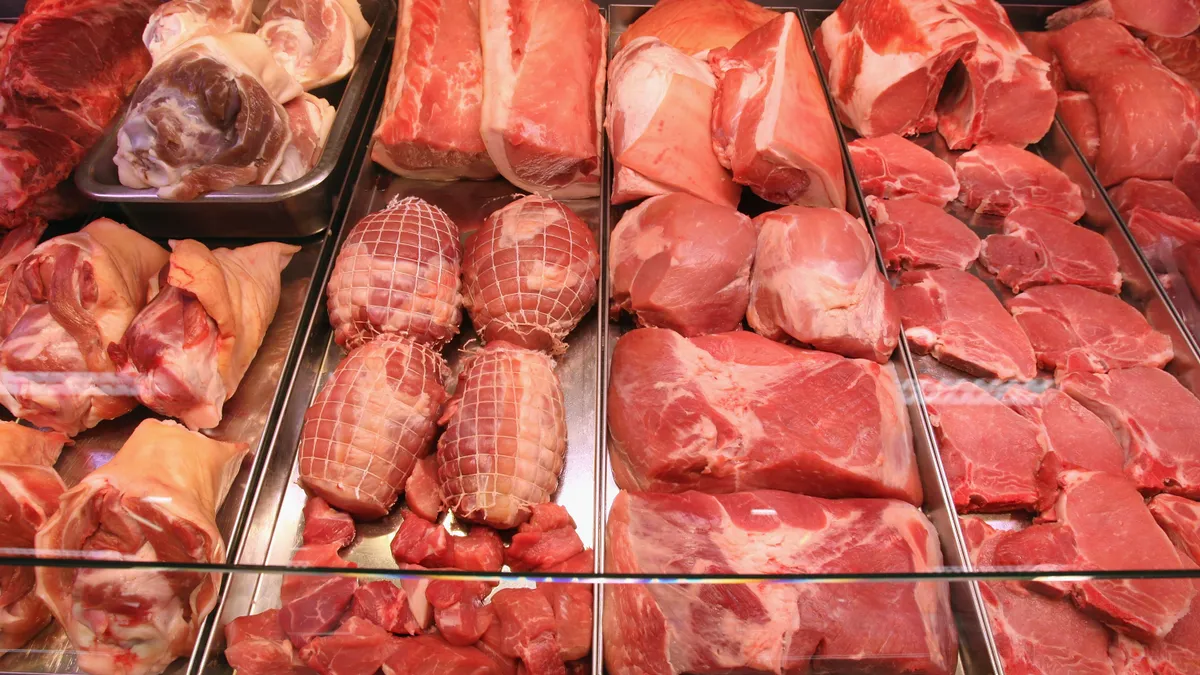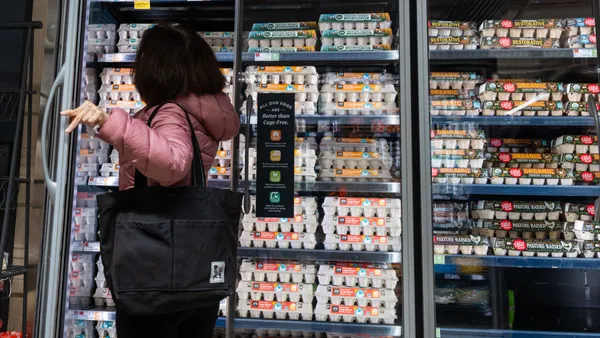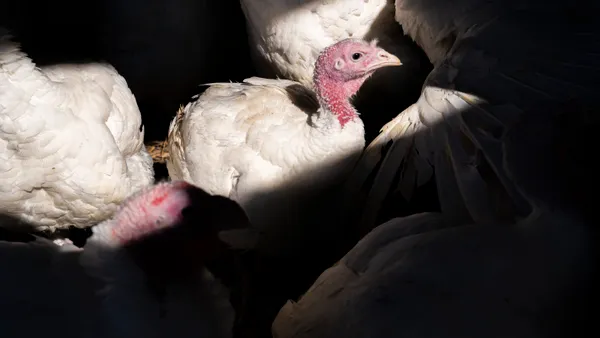Dive Brief:
- Wholesale U.S. pork prices have seen notable declines in recent weeks, driven by excess supply and softer demand as consumers gravitate more toward beef and poultry products, according to USDA data compiled by CoBank.
- Data shows the pork cutout value was $84.71 the last week of May, down 21% year over year and 5% lower from when it peaked in March. Declines were largely driven by a downturn in belly prices.
- Despite lower wholesale pork prices,consumers are not seeing price relief reflected on the retail side, said Brian Earnest, a lead protein analyst at CoBank. That could slow demand further, just as the industry prepares to absorb higher input costs associated with the implementation of California’s Proposition 12.
Dive Insight:
Market uncertainty, policy issues and operational challenges are placing pressure on the industry as inflation-wary consumers continue to keep a close eye on their spending.
Historically, wholesale beef and pork prices tend to coincide with each other, Earnest said, but cutout prices have diverged in recent weeks. USDA data shows the cutout value spread was $213 per cwt in the last week of May, compared to $153 per cwt the same week last year.
Earnest said strong slaughter rates at the start of the year led to larger than expected pork supply, pulling prices down further in an industry affected by historically weak demand. Meanwhile, wholesale beef prices are elevated on tight cattle supplies and strong demand.
Bacon in particular is "really cheap," Earnest said, adding that lower prices could fuel demand on the consumer side.
“Chicken sandwiches, burgers, and several items go well with putting bacon on them and in general, this inflationary environment has pulled back with putting bacon on items,” he said. “Now bacon looks like it’s set to be a darling.”
Hormel Foods, a major pork processor, reported a 4% sales decline in its most recent earnings report, with President and CEO James Snee saying on a June 1 call it was due in part to “significant pork deflation during the quarter,” affecting retail bacon and value-added products. Strong sales volume activity that spurred demand was offset by lower prices.
Snee said during the call that the company has “absorbed significant losses on our harvest operations like the rest of the industry” and will continue to monitor industry trends and assess when to raise their own animals or buy meat from other suppliers.
Although bacon sales are strong, fresh pork remains a mixed bag. According to USDA data compiled by the Pork Checkoff, the pork butt primal was 4.9% higher than last year and the picnic primal was down 1.6%. Meanwhile, pork loins continue to struggle as chicken prices remain competitive. The value of the loin primal last Friday was $89 per cwt, down 19% year over year.
Tyson Foods, the largest U.S. meat producer, saw pork sales decline and reported an operating loss of $31 million in Q2 due to pricing and operational headwinds. The company lowered its pork margin guidance for the rest of the year, expecting a breakeven or margin loss of up to 2%.
In the near term, the pork industry is looking to adjust to the overall slowdown in retail demand and the expected disruptions caused by Prop 12, a California state law that requires pigs to have 24 square feet of usable space. The U.S. Supreme Court ruled in favor of the law in May, and enforcement will begin in July.
Producers worry Prop 12 will raise production costs, in turn raising prices for consumers. Lean hog futures fell following the Supreme Court’s ruling, but have since rebounded, closing at $87.80 on Friday after trading as low as $71.50.
In Hormel's earnings call, Snee reassured investors the company has been Prop 12 compliant with a portion of its supply since January 2022 and expects to begin recovering investment costs this summer.











